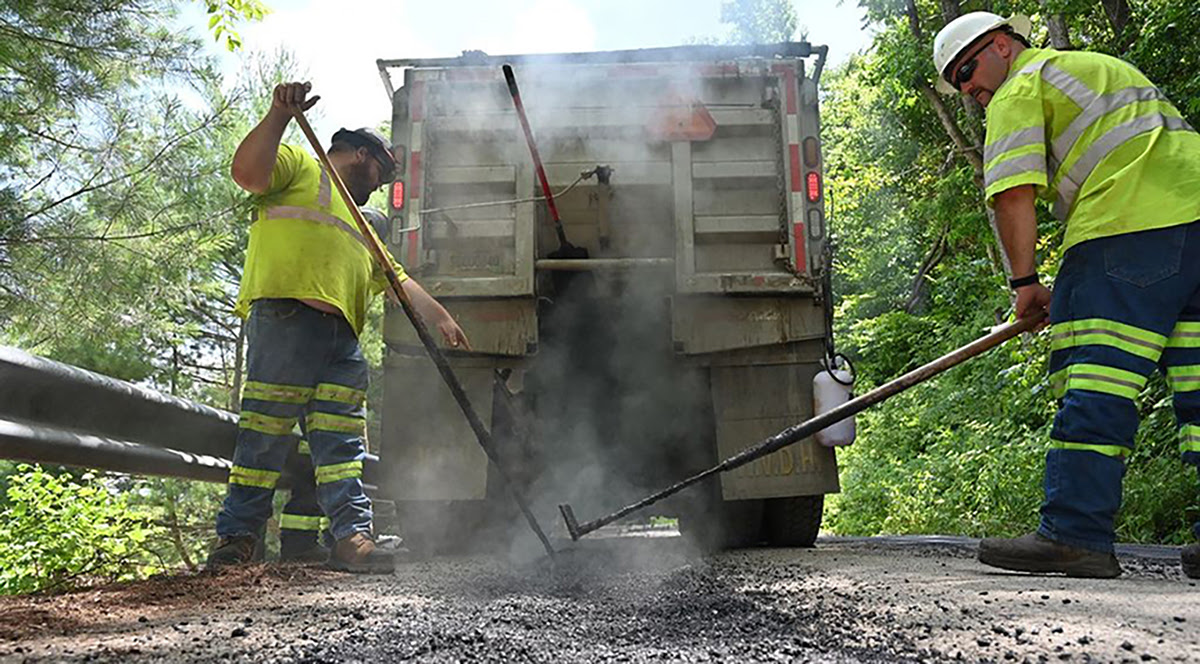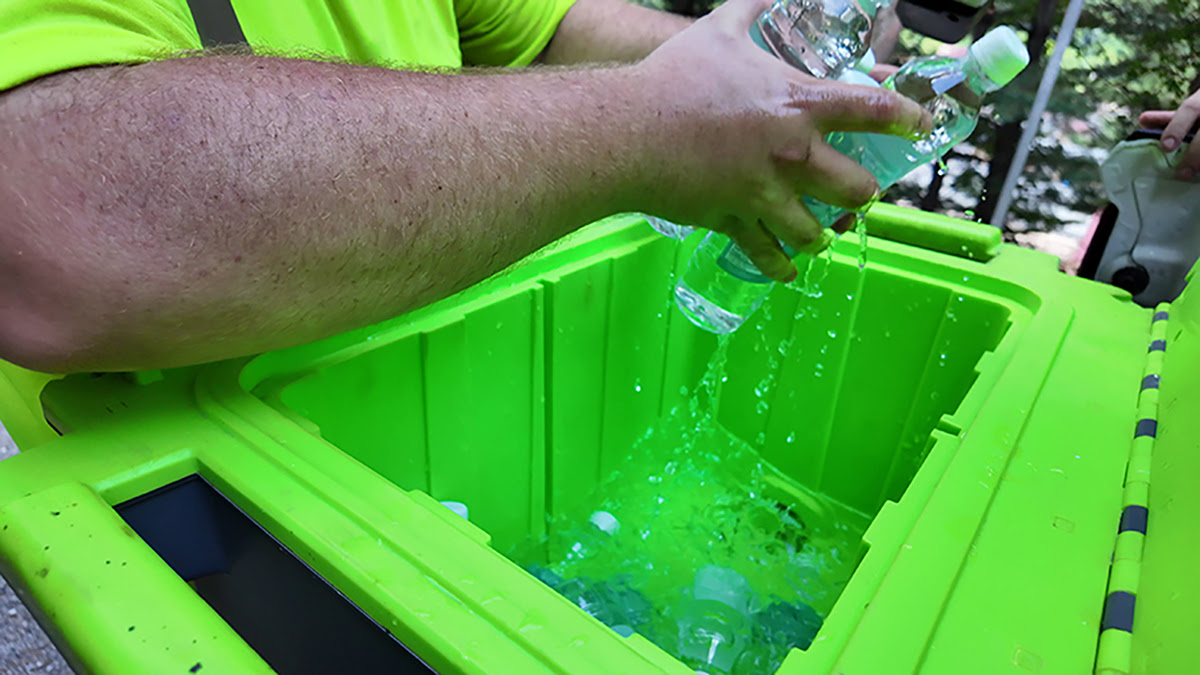
West Virginia Division of Highways (WVDOH) transportation workers – and our contracting partners – are outside every day, patching roads, mowing roadsides, paving, building bridges, repairing slips and slides. They work even when temperatures and humidity soar.
“We appreciate the hundreds of transportation workers who are out in the elements every day, in the heat of summer and the cold of winter, in the rain and in the snow, to keep our roads safe for the citizens of West Virginia,” said state Transportation Secretary Stephen Todd Rumbaugh,” P.E. “Keep them in mind when you’re traveling through work zones this summer.”
WVDOH transportation workers are working around the state, often in equipment that lacks air conditioning, to make the roads safer for us all. They’re pouring, raking and compacting asphalt that comes off the back of the truck at 300 degrees Fahrenheit, in temperatures that have recently climbed into the mid-90s.

According to the National Safety Council, construction workers, highway workers, and others who work outside are among those most at risk for heat-related illnesses including heat exhaustion and heat stroke. To minimize the risks, workers should:- Stay hydrated, and try to drink before getting thirsty.
- Take time to rest and cool down.
- Wear loose, lightweight clothing and a hat.
- Replace lost salt from sweating by drinking fruit juice or sports drinks.
- Wear sunscreen.
- Be on the lookout for coworkers exhibiting signs of heat exhaustion or heat stroke.

Heat exhaustion occurs when the body loses excessive water and salt. Signs of heat exhaustion include: - Pale, ashen, or moist skin.
- Muscle cramps, especially for those exerting themselves in the heat.
- Fatigue, weakness, or exhauston.
- Headache, dizziness, or fainting.
- Nausea or vomiting.
- Rapid heart rate.
To help alleviate heat exhaustion, move victims to a shaded or air-conditioned location, give water or other cool liquids, and apply wet towels. Unaddressed heat exhaustion can lead to heat stroke, which can be fatal. Signs of heat stroke include: - Body temperature that is above 103 degrees.
- Skin that is flushed, dry, and hot to the touch. Sweating has usually stopped.
- Rapid breathing.
- Headache, dizziness, or confusion.
- Irrational or belligerent behavior.
- Convulsions or unresponsiveness.
Take action immediately if heat stroke is suspected. Call 911, move the victim to a cooler place, remove unnecessary clothing, and immediately immerse the victim in cold water if practical. If not practical, get the victim into a cold shower, or move to a cooler location and cover as much of the body as possible with cold, wet towels. Keep cooling the body until the temperature drops below 101 degrees, and prepare to give CPR if needed. As you travel around the Mountain State this summer construction season, remember the men and women who are outside working in the heat so that you don’t have to.